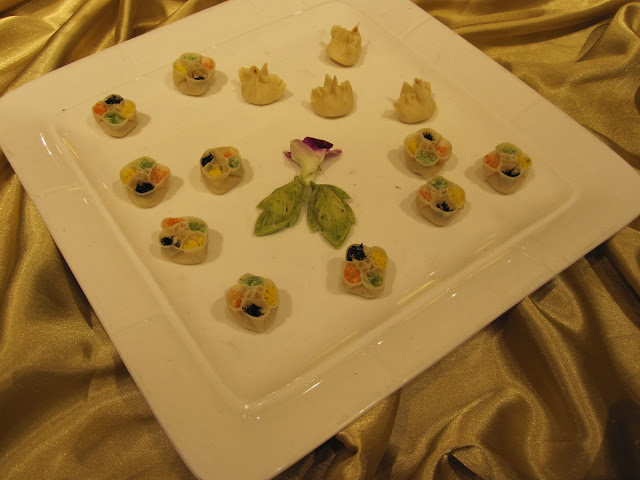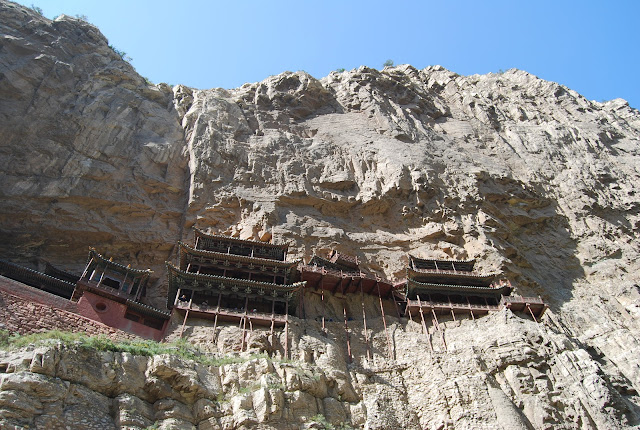The overnight train deposited us in a very busy, very Chinese section of Xi’an around mid-morning. The scene we were greeted with was this…
But lucky for us we stick out like a sore thumb so were easily found by our guide, Kathy. Kathy was a tough cookie who took good care of us while we were in her city. All of these guides have studied tourism and English in college and then are employed by the government tourism agencies to guide foreigners through the cities. I have to say, they really know their stuff. Each one has had a very detailed knowledge of Chinese history with precise dates, names of Emperors, places, etc. for the 2,000 plus years of Chinese history!
After a quick time at the hotel to refresh, we were on our way to lunch (Chinese!) and then to see the Terra Cotta Army just outside of Xi’an. This site is called the 8th wonder of the world and I can see why. Here’s the history in case you’re not familiar: Back in the 1970’s some poor peasant farmer was digging a well and dug up a head made out of terra cotta. Although he did not realize the significance of the discovery, a visiting journalist to the village soon did and then the government began to excavate and discovered an unbelievable find. Thousands and thousands of these terra cotta soldiers, and a few terra cotta horses and chariots, buried beneath the ground for 2,200 years. The Emperor of the Qi dynasty, a very powerful guy, chose Xi’an as his final resting and to protect him into the after world, he ordered the construction of this terra cotta army. They are placed 1.5 kilometers to the west of his tomb which rises like a hill in distance. His tomb has yet to be opened because there is a series of “booby traps” in place, including a lake of mercury, and scientists have still not figured out how to open it without destroying the inside contents.

Anyways, back to the warriors… there are three pits that the archaeologists have discovered via X-ray. The first pit has over 6,000 warriors in it while the second and third pits are smaller but equally impressive.
 |
| Pit 1 - the largest collection |
 |
| Pit 2 - Look at how broken the statues are when they find them! |
 |
| The second largest pit. |
 |
| What a puzzle to piece together. |
The warriors were initially discovered by the successor to the Qi emperor and destroyed and burned but since the 70’s the Chinese government has been steadfastly and meticulously piecing them back together bit by bit. They also have discovered that the warriors were originally painted but when they are exposed to the air, the color fades within 3 minutes! So for the time being they are not uncovering any more until the technology we have catches up and they can preserve the color.
 |
| This is where they are piecing ones together bit by bit. |
 |
| These are the ones that have traveled around the world to special exhibitions. |
 |
| Look at the detail! |
 |
| Each face is unique. |
Of all the 6,000+ warriors that have been found – either uncovered or x-rayed – only one, the kneeling archer, was found intact. He has been brought up to the surface and enclosed in a glass case so you can get a better look and I have to say the detail is amazing – down to the detailing of his braid and the soles of his shoes. Each statue is different from the others by what they wear, their hair, face, expressions, etc. This is an overwhelming discovery that is truly impressive!


Because we spent so much time at the warriors, we missed going to the city wall, but instead we had a special outing at night. The Xi’an city wall is the best preserved and oldest city fortification wall in China. It is 14 kilometers long, 17 meters tall and is 12 meters across. You can actually walk or bike around the top of the wall. There are 4 original gates to the wall and then a bell tower to the east and a drum tower to the west. The bell and drum towers were the original way of telling time in ancient days.

Stevie arranged through Kathy our guide to go to eat at a restaurant within the city wall for my birthday. Inside the wall is not the historical type district you might expect, but really the shopping district for the city. Xi’an and it’s province is known for their dumplings so Kathy made us reservations at the best dumpling restaurant in the area. You have to pre-order your meal and it comes out as an assortment of 18 different types of dumplings all beautifully made. The true works of art are on display in the lobby of the restaurant…
 |
| Yes, those are dumplings in the shape of swans! |
 |
| Too pretty to eat! |
After making it through walnut dumplings, spicy chicken dumplings, pork and sweet potato dumplings, etc. I was surprised by a rendition of “Happy Birthday” sung by the waitstaff and accompanied by a Chinese flute. They presented me with a crown and a beautiful homemade cake decorated with lychees and chocolate rolls. What an excellent way to spend your birthday!
 |
| With my wonderful hubby! |
 |
| Yes, that is a tower of 18 different types of dumplings! |
After dinner we walked past the 600 year old bell tower to the Muslim night market. A cacophony of noises, sights and smells that was truly Chinese. The stalls were laden with dried fruits, trinkets, various meats on sticks, walnuts roasting, etc. What a way to end the day!
 |
| The bell tower |
 |
| Where else but in China would you see a man with a very large telescope on his motorcycle??? |
 |
| Dried fruit stalls |
 |
| Pomegranates |
 |
| Bowl of noodles anyone? |









































































